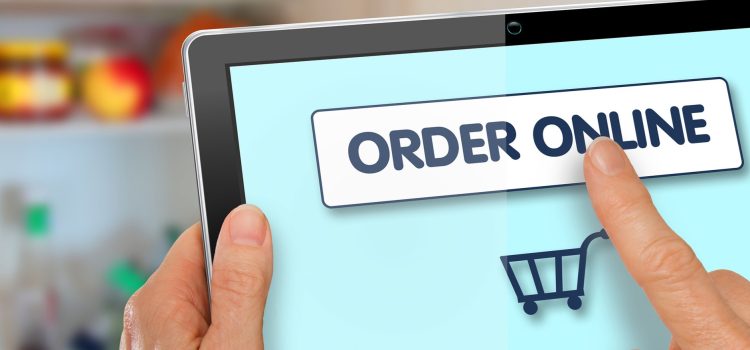
In the rapidly evolving landscape of e-commerce, having an efficient and user-friendly online ordering platform for small business is essential for success. As consumer expectations continue to rise, small businesses must adopt solutions that enhance the customer experience while streamlining operations. This article explores the key features that make online ordering platforms effective, which can significantly impact sales and customer satisfaction.
Understanding the Importance of Online Ordering Platforms
An online ordering platform allows customers to browse products, place orders, and make payments through a website or mobile application. For small businesses, these platforms provide a vital channel for reaching customers, especially as more consumers turn to online shopping for convenience. An effective online ordering system can help businesses increase sales, improve operational efficiency, and enhance the overall customer experience.
Why Features Matter
The features of an online ordering platform can directly influence how effectively a business operates and how satisfied its customers are. A well-designed platform can lead to increased sales, reduced operational costs, and improved customer loyalty. Conversely, a poorly designed system can frustrate customers and drive them away.
Key Features to Look for in an Online Ordering Platform
1. User-Friendly Interface
A user-friendly interface is essential for both customers and staff. The ordering process should be straightforward, allowing customers to find products quickly and complete their purchases without confusion.
- Intuitive Navigation: The platform should have a clean layout with easy navigation to help users locate products and services effortlessly.
- Search Functionality: Implement a robust search feature that allows customers to find specific items quickly.
- Clear Call-to-Action Buttons: Ensure that buttons for “Order Now,” “Add to Cart,” and “Checkout” are prominently displayed and easy to access.
2. Mobile Compatibility
With an increasing number of consumers shopping on their mobile devices, it is crucial that your online ordering platform is mobile-responsive.
- Responsive Design: The platform should automatically adjust to fit various screen sizes, providing a seamless experience on smartphones and tablets.
- Mobile App Option: Some businesses may benefit from a dedicated mobile app that offers a streamlined ordering experience.
3. Secure Payment Processing
Security is a top priority for online transactions. A reliable online ordering platform must offer secure payment processing options.
- Multiple Payment Options: Support various payment methods, such as credit cards, PayPal, and digital wallets, to cater to different customer preferences.
- PCI Compliance: Ensure that the platform adheres to Payment Card Industry Data Security Standards (PCI DSS) to protect customer information during transactions.
4. Real-Time Inventory Management
Effective inventory management is crucial for preventing stockouts and ensuring customer satisfaction. An online ordering platform should integrate with inventory management systems to provide real-time updates.
- Stock Level Alerts: Implement automatic alerts for low stock levels to help businesses reorder products before they run out.
- Inventory Visibility: Allow customers to see current stock levels when placing orders, reducing frustration and increasing transparency.
5. Customization Options
An effective online ordering platform should allow businesses to customize the user experience to align with their brand identity.
- Branding Elements: The platform should enable businesses to incorporate their logos, color schemes, and other branding elements.
- Custom Product Descriptions: Businesses should have the flexibility to create detailed product descriptions, including images, specifications, and pricing.
6. Order Tracking Capabilities
Providing customers with the ability to track their orders in real-time enhances transparency and builds trust.
- Tracking Notifications: Implement automated notifications to keep customers informed about the status of their orders, including confirmation, shipping, and delivery updates.
- Order History: Allow customers to view their past orders, making it easier for them to reorder items they love.
7. Customer Support Features
Excellent customer support is essential for addressing inquiries and resolving issues promptly.
- Live Chat Options: Incorporate live chat functionality to provide immediate assistance to customers during the ordering process.
- Comprehensive FAQs: Offer a well-organized FAQ section to address common questions and concerns, helping customers find information quickly.
8. Marketing and Promotion Tools
An effective online ordering platform should include features that help businesses promote their products and engage with customers.
- Discount Codes and Promotions: Allow businesses to create and manage discount codes, special offers, and promotions to attract new customers and encourage repeat purchases.
- Email Marketing Integration: Integrate with email marketing tools to send promotional emails, newsletters, and order confirmations.
9. Analytics and Reporting
Data-driven insights are crucial for businesses looking to optimize their operations and sales strategies.
- Sales Reports: Provide businesses with detailed reports on sales performance, popular products, and customer behavior to inform decision-making.
- Customer Insights: Analyze customer data to identify trends and preferences, enabling targeted marketing efforts.
10. Integration with Other Systems
An online ordering platform should seamlessly integrate with other business systems to streamline operations.
- Accounting Software: Integration with accounting tools helps manage finances and track revenue without manual data entry.
- CRM Systems: Connecting with customer relationship management (CRM) systems enhances customer engagement and improves marketing strategies.
Best Practices for Implementing an Online Ordering Platform
1. Define Clear Objectives
Before adopting an online ordering platform, clearly define your business objectives. What do you hope to achieve? Whether it’s increasing sales, improving customer satisfaction, or reducing operational costs, having specific goals will guide your implementation strategy.
2. Choose the Right Platform
Take the time to research and compare different online ordering platforms. Look for solutions that align with your specific needs and budget. Request demos or trials to evaluate usability and features.
3. Train Your Staff
Ensure that your staff is well-trained in using the online ordering platform. Provide comprehensive training sessions to familiarize them with the system and its features.
4. Promote Your Online Ordering System
Once your platform is live, promote it through various channels. Use social media, email marketing, and in-store signage to inform customers about the availability of online ordering.
5. Gather Feedback and Optimize
After launching the platform, gather feedback from customers and staff to identify areas for improvement. Use this feedback to make adjustments that enhance the user experience.
6. Monitor Performance
Regularly review analytics from your online ordering platform to track performance metrics. This data will help you identify trends, measure success, and inform future marketing strategies.
Conclusion
Investing in an online ordering platform for small business is a strategic move that can significantly boost sales and improve customer satisfaction. By incorporating key features such as a user-friendly interface, secure payment processing, and real-time inventory management, small businesses can streamline operations and enhance the customer experience. As you consider implementing an online ordering system, prioritize the features that align with your business goals and customer needs. With the right platform in place, your small business can thrive in today’s competitive marketplace.










